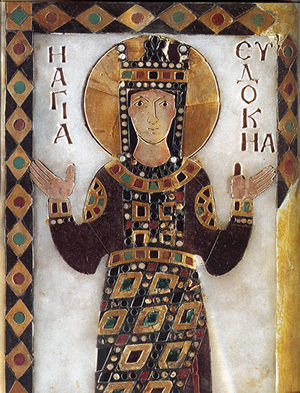Gertrude the Great of Helfta. The Memorial of the Abundance of the Divine Sweetness. Translated and introduced by Alexandra Barratt. Liturgical Press, 2022. ISBN 9780879071387 (print) and 9780879071394 (online)
"Gertrud the Great (1256–1302) entered the monastery of Helfta in eastern Germany as a child oblate. At the age of twenty-five she underwent a conversion that led to a series of visionary experiences, some of which she recorded in Latin "with her own hand," in what became Book Two of The Herald of God’s Loving-Kindness, the standard version of her revelations. The other four books were written down by a close confidant of the saint, now often known as 'Sister N.'
Recently a different version of Gertrud's revelations has been discovered, in an early fourteenth-century manuscript held at the University of Leipzig, Germany, much older than the known manuscripts of The Herald. The Memorial of the Abundance of the Divine Sweetness is shorter than The Herald, and while the two versions have some text in common (notably most of The Herald's Book Two), the new manuscript also contains some completely new material, which sometimes modifies and sometimes complements what readers already know of the saint." — [Reproduced from the publisher's website]
 Indexers select a translation each month that is
significant in the ideas it presents. This gives users an opportunity to see a range of newly
translated medieval works of importance for women's and gender studies. It also will build an archive
of references to translations that will be useful as classroom readings.
Indexers select a translation each month that is
significant in the ideas it presents. This gives users an opportunity to see a range of newly
translated medieval works of importance for women's and gender studies. It also will build an archive
of references to translations that will be useful as classroom readings.
Depending upon the content, an entire work may be indexed as a single title like the vita of a
saint or the collected cartularies of a countess. But in many cases the translation deals only in part
with issues involving women and gender. In those instances, indexing goes to a deeper level,
identifying and describing specific sections within a text. For example, there are 93 records for
pertinent sections in the Siete Partidas.
To see more translations, go to the Advanced Search Page and put
"Translation" in the Article Type box. Add specific terms to Keyword,
Century or Geographical Area as needed.
There are currently over 3000 records for translations in Feminae. There are also over 500 records for
editions in original languages.
Feminae welcomes unpublished translations and editions that authors may wish to make available.